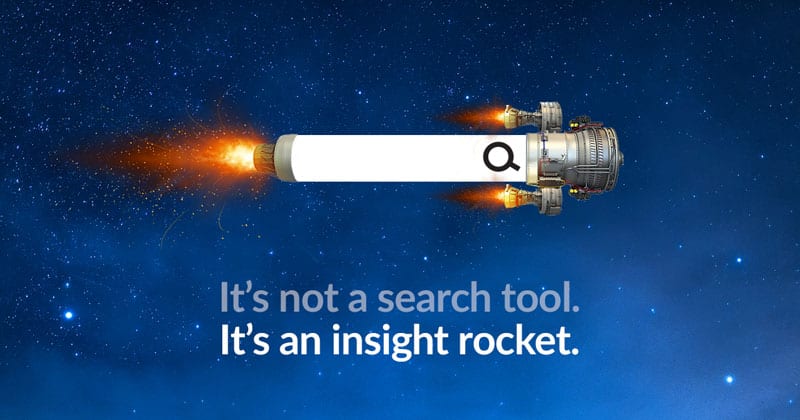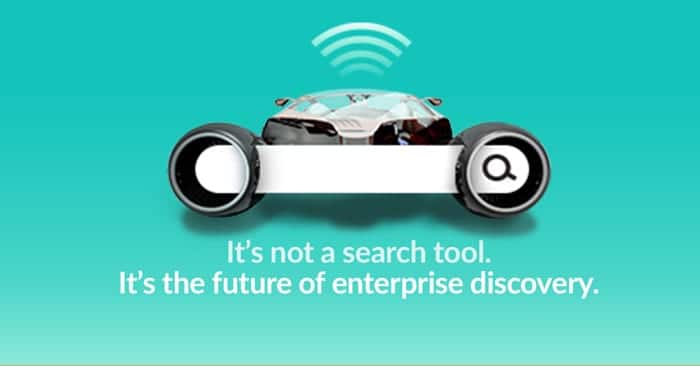Has Productivity Reached Its Peak?
Discover how Lucidworks lets you combine human expertise with machine learning to create a digital workplace experience for the modern workforce.

There are three major theories as to why the US, UK, and other developed economies have seen a stagnation in productivity growth in recent years. The first is that we’ve already squeezed all the major productivity gains we’re really going to get. The second is that we’re not measuring productivity correctly. The third is that productivity lags while major innovations are developed.
The first theory is interesting to economists but seems wrong on its face. If you’ve ever sat on the phone for hours trying to fix a screw-up or had a tough business question to answer, you know there are still things we’re not doing. I can stare across any office in the world and see that we haven’t quite finished optimizing the business.
At the same time, we probably can’t expect to see the kind of productivity gains in the economy that we saw from telecommunication, electrification, and digitization, at least not for a long while.
The second theory, that we’re not measuring productivity right, seems to ring some truth. In the last few decades, business has transformed in two major ways. The first is globalization and the second is digitization.
Major manufacturing has moved to developing economies, and largely the finance and data management resides in the developed economies. This trend is changing as developing economies mature, but this has largely been the state of the economy for the last few decades. This means that a national measure of productivity may not be as relevant as it once was.
With digitization, more work is being done by computers, but we’ve yet to completely automate major business processes. Most decisions, even relatively minor decisions are still made in the analog world. This requires people to sift through an ever-increasing amount of data. While digitization realized major gains in the early 2000s, data exploded after that. Businesses are still figuring out how to use that for better productivity.
The third theory, that gains are on a long curve, also has a lot on it. Major investments in commercialized outer space applications, self-driving cars, and artificial intelligence are a drain on economic measures. A lot is being put into them, but only AI is beginning to pay off and is just on the verge of the kind of mass deployment it deserves.
What can we do about it?
If the first theory were true then I suppose we couldn’t do much. However, if bits of all of the theories are true, there is a lot we can do for an individual business.
Shine a Light On Your Data

We need to adapt our business processes to thrive in a data-driven economy. Employees have more data than ever before at their fingertips, but it’s often siloed and difficult to access — making decisions without access to insights is like asking someone to choose the best option but only providing half of the available choices.
The most important thing is to equip our workers with the technology to understand and access insights alongside all that data.
Identify Processes Ripe For Digital Transformation
When you stare across the office, ask the question “who is waiting on something and why?” When you receive an email from a team member asking a question, ask “could the person have answered this question for herself?” Both of these scenarios are evidence of knowledge gaps. Knowledge gaps can arise from data issues, where employees can’t access the necessary information to do their jobs, to organizational problems, where there are holes in how a business uses technology to power operations, and endless other combinations.
A robust digital transformation strategy could have a major long-term impact on productivity by getting the right information to the right people, sometimes before they even need it.
Invest In AI To Automate (Some, Not All) Decision-Making

With more and more data pouring in, people can’t spend time making the small decisions. It’s time to deploy AI and machine learning to make use of data science throughout the enterprise. It starts with an investment in and a strategy for AI. How is your company going to invest in technology that augments employee intelligence and expertise to create a more productive (and delightful) experience? It’s time to answer this question.
Bring AI-powered search and personalized applications to the workplace for faster decisions, happier teams, and loyal customers.
So, basically…
Measuring productivity is difficult and we’re probably doing it wrong. Meanwhile, innovation takes time and investment first looks like a drain on productivity. With increasing amounts of data and the centrality of data, we need to equip our workforce to work with that data. A key piece of working with data is deploying AI technologies and turning over the smaller, every-day decision to the machines.
Discover how Lucidworks lets you combine human expertise with machine learning to create a digital workplace experience for the modern workforce.
You can also check out these resources to learn more:
- Enterprise Search Buyers Guide – Looking for an enterprise search solution to increase your productivity? This buyers guide reviews the marketplace, terminology, features, and selection criteria to help you make a decision.
- Enterprise Search in 2025 – Learn what to expect with the future of search and how it could impact your business for years to come.
Artificial Intelligence Concepts — Get back to the basics. Check out the Lucid Thoughts series to learn how AI, machine learning, and deep learning are being applied to create a better digital workplace.
Best of the Month. Straight to Your Inbox!
Dive into the best content with our monthly Roundup Newsletter!
Each month, we handpick the top stories, insights, and updates to keep you in the know.
